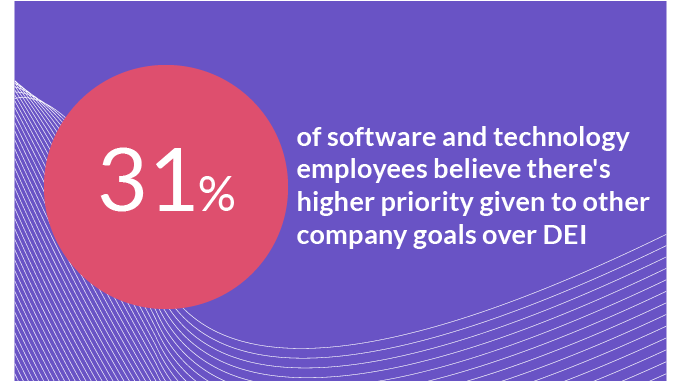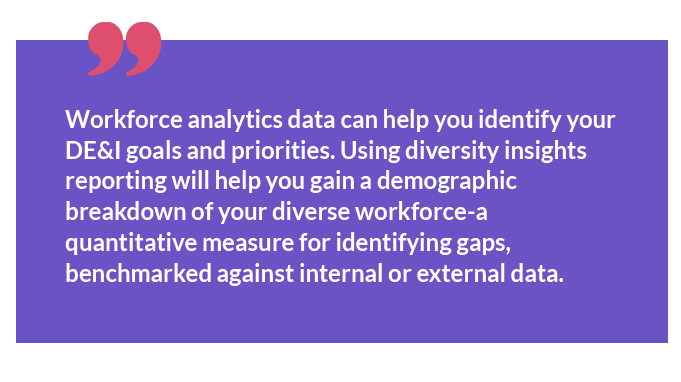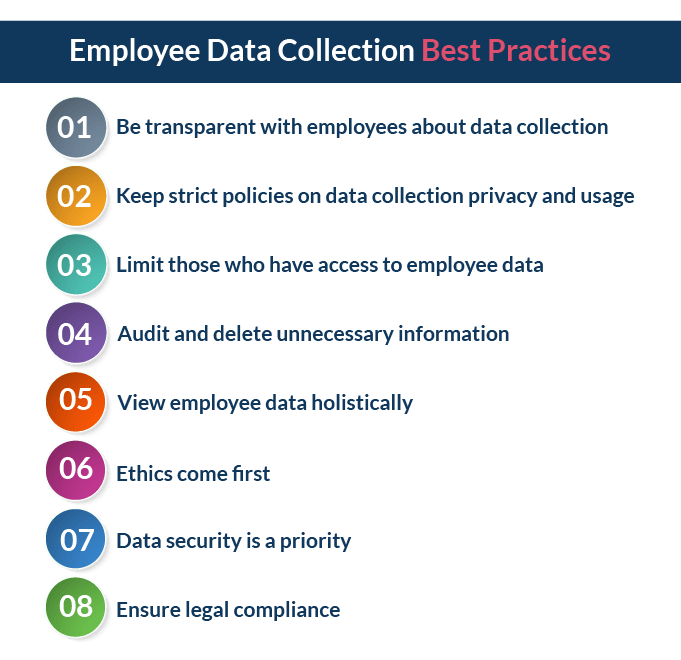Conduct Your Office DEI Audit in 7 Easy Steps
Investing in a DEI (Diversity, Equity, and Inclusion) audit is crucial to fostering an inclusive and equitable workplace.
By systematically assessing your organization's practices and policies, you can identify areas of strength and areas that require improvement, allowing you to develop targeted strategies for meaningful change.
We also have a guide that will outline all about diversity and inclusion in the workplace. Meanwhile, read with us in 7 easy steps to help on how you can conduct an effective DEI audit to keep your diversified take on DE&I.
By following these steps, you can gain valuable insights, promote diversity, ensure equity, and create a more inclusive work environment for all employees.
Let's dive in and explore the process of conducting your DEI audit.
Key Takeaways!
- Concept of DEI audit
- Importance of DEI audits; that highlights the significance of conducting DEI audits in organizations to assess their diversity, equity, and inclusion efforts
- What key metrics to consider while conducting a DEI audit?
- Step by step guide on how to conduct DEI audit.
- DEI audit checklist-sample questions
- Common DEI audit tools
- FAQs
What is a DEI Audit?
A DEI (Diversity, Equity, and Inclusion) audit, also called inclusive content auditing, is an evaluation process that examines an organization's practices, policies, and culture to assess its commitment to DEI inclusion in the workplace.
It involves analyzing a piece of content in areas like recruitment, retention, employee engagement, and leadership representation to identify strengths and areas needing improvement.
Companies that ranked in the top quartile for ethnic diversity among their executives were 33% more likely to outperform competitors on profits than those in the bottom 25%.
A DEI audit aims to create focus groups for a more inclusive and equitable workplace by developing targeted strategies. It may also include initiatives based on the audit findings.
Although DEI audits are crucial and necessary in companies, many still fail to prioritize DEI in their organization. This lack of prioritization can stem from various factors, including a lack of understanding about the benefits of DEI, resistance to change, or competing priorities.

Importance of DEI Audit?
The importance of a DEI audit cannot be overstated. After all, it helps companies assess their DE&I compliance in a quantifiable and standardized way.

1. Identifying Gaps and Inequities
A DEI audit uncovers existing disparities and inequities in the workplace, highlighting areas where representation, access, and fair treatment may be lacking.
2. Promoting a Fair and Inclusive Environment
A DEI audit helps create an inclusive work culture by evaluating policies and practices and fostering job satisfaction, engagement, and productivity.
3. Enhancing Recruitment and Retention
Through the audit, organizations can improve their recruitment processes, attract diverse talent, and create a sense of belonging, increasing employee retention rates.
4. Improving Decision-Making and Innovation
A DEI audit encourages diverse perspectives, leading to better decision-making, innovative problem-solving, and improved business outcomes.
5. Strengthening Reputation and Relationships
Prioritizing DEI initiatives enhances an organization's reputation, builds stakeholder trust, and demonstrates a commitment to creating an inclusive and equitable workplace.
6. Ensuring Compliance and Mitigating Risks
Conducting a DEI audit ensures compliance with legal requirements, mitigates risks associated with discrimination, and fosters a safer work environment.
7. Improves DEI Trends like Gender Identity and Gender Expression
By conducting a comprehensive diversity, equity, and inclusive assessment of policies, practices, and organizational culture, audits can set new trends and identify barriers, biases, and areas for improvement.
These issues may hinder the inclusion of individuals with diverse gender sexuality, identity, and expression and thus setting policies in place is necessity.
Important:
Remote work environments can present unique challenges in fostering inclusivity and mitigating potential biases.
8. Helps Handle Disparaties
Conducting a DEI audit allows organizations to assess and address any disparities or barriers that remote workers may face in terms of access to resources, opportunities for growth, and inclusion in decision-making processes. It helps identify and implement strategies to create an inclusive remote work culture
Key Metrics to Measure DEI
Measuring Diversity, Equity, and Inclusion (DEI) is crucial for organizations seeking to create inclusive and equitable workplaces.
By tracking key DEI metrics, organizations can assess their progress, identify areas for improvement, and drive meaningful change. Here are the key DEI metrics to measure:
- Representation: Track demographic composition (gender, race, ethnicity, age, disability status) to assess workforce diversity.
- Hiring and Promotion: Measure diversity in candidate pools, hires, and promotions to identify potential biases.
- Employee Engagement: Conduct surveys to gauge satisfaction, sense of belonging, and engagement levels.
- Pay Equity: Analyze compensation data to identify and address gender, racial, or ethnic pay gaps.
- Retention: Monitor retention rates among diverse groups to identify potential retention challenges.
- Leadership Diversity: Assess the representation of diverse individuals in leadership and decision-making roles.
- Training and Development: Measure participation rates in DEI-focused training and development programs.
- Employee Resource Group (ERG) Engagement: Assess ERG participation and engagement levels.
- Supplier Diversity: Evaluate the diversity of the organization's supplier base and contract distribution.
- Community Engagement: Track involvement in community partnerships and social impact initiatives.
By consistently monitoring these metrics, organizations can make data-driven decisions, set goals, and foster an inclusive and equitable workplace culture.
How to Conduct DEI Audit: A Step-by-Step Guide
Conducting a DEI audit at an enterprise level involves a systematic and comprehensive approach to assess the organization's diversity, equity, and inclusion efforts.
Glimpse into the steps of how to establish a clear audit plan and objectives, outlining the scope of the audit, and identifying key stakeholders and resources.
1. Identifying the Balance
When conducting a diversity, and workplace equity audit, the first step is to identify the balance within your organization.
This refers to assessing the current demographic composition of your workforce and evaluating whether it reflects a diverse and inclusive representation.
So how to identify the balance?
- To accomplish this, you need to gather relevant data about your employees, such as their race, ethnicity, gender, age, disability status, and other diversity factors that are important to your organization.
- This data can be obtained through voluntary self-identification surveys or existing HR records.
- Once you have the data, you can analyze it to understand the current position of your workforce across different levels, departments, and job roles.
- This analysis will help you identify any imbalances or disparities in terms of long-term representation.
2. Asking Questions
The second step in conducting a Diversity, Equity, and Inclusion (DEI) audit is asking questions.
It is crucial to ask yourself and others within your organization a series of targeted questions.
It will help gain a deeper understanding of DEI's current state and identify areas for improvement.
How can you best ask questions in a corporate setting?
This process can involve various methods such as questionnaires, group interviews, or individual interviews.
These sample questions below can serve as a starting point and can be customized based on your organization's specific needs and context.
1. Awareness and Understanding
- Do you feel that the organization values diversity and inclusion?
- How well do you understand the organization's DEI goals and initiatives?
- Have you received any training or education on DEI topics? If yes, how effective was it?
- Are you aware of the consequences of biased behavior or discrimination in the workplace?
2. Recruitment and Hiring:
- Have you observed any instances where recruitment or hiring decisions may have favored certain groups over others?
- Do you feel that the recruitment process is inclusive and attracts diverse candidates?
- Are there any specific barriers or challenges that hinder the recruitment of diverse talent?
3. Inclusive Work Environment:
- Do you believe that all employees have equal opportunities for growth and advancement?
- Have you witnessed or experienced any incidents of discrimination or harassment in the workplace?
- How comfortable do you feel expressing your unique perspectives and ideas at work?
By asking these questions you can be assured on how much you want to invest in implementing DE&I practices and auditing them accordingly.
These surveys actively seek employee input, while you gain valuable insights and perspectives regarding diversity, equity, and inclusion within your organization.
Furthermore, by actively involving employees in the DEI audit process, you foster a culture of collaboration, trust, and ownership. It leads to impactful and meaningful changes in your organization's DEI efforts.
3. Reevaluating Business Goals
Reevaluating business goals during a DEI audit involves carefully examining the existing goals and objectives.
- The first step is to assess the current state by reviewing the company's mission, vision, and values statements.
- This assessment helps identify any misalignment or gaps in the goals that must be addressed.
- Once the gaps are identified, new DEI goals can be set to ensure inclusivity and diversity are integrated into the business's strategic objectives.
- These new goals should be specific, measurable, attainable, relevant, and time-bound (SMART), allowing the company to track progress and hold itself accountable.
By reevaluating business goals and implementing inclusive hiring practices, organizations can create a more diverse and equitable workforce that contributes to a culture of inclusivity and fosters innovation and growth.
4. Collect and Analyze Employee Data

Collecting and analyzing employee data plays a vital role in conducting a DEI audit by providing valuable insights into an organization's diversity, equity, and inclusion efforts.
One crucial aspect of this process is collecting demographic data about employees, including gender, race, ethnicity, age, disability status, and veteran status.
Analyzing this data allows organizations to comprehensively understand their workforce composition, identify any underrepresented groups, and assess whether there are disparities in representation or opportunities.
By examining the data, organizations can identify areas for improvement and develop targeted strategies to foster a more inclusive and equitable workplace.
Additionally, HR data analysis can help track key metrics related to recruitment, promotion, retention, and pay equity, enabling organizations to identify any potential biases or inequities and implement corrective measures.
How to collect and analyze data?
-
Identify relevant data points:
Determine the specific data points that are relevant to your DEI audit. This may include demographic information (gender, race, ethnicity, age, etc.), employee turnover rates, promotion and advancement data, salary and compensation data, training and development records, and any other data that can provide insights into diversity and inclusion within the organization. -
Ensure data privacy and confidentiality:
Before collecting data, ensure that you have proper protocols in place to protect the privacy and confidentiality of employees. Adhere to legal and ethical guidelines, and consider anonymizing or aggregating data to maintain confidentiality while still enabling analysis. -
Collect data:
Utilize HR systems, employee surveys, and other relevant sources to collect the identified data points. Ensure accurate and comprehensive data collection, and consider using standardized formats or templates to maintain consistency.
Collecting and analyzing data provides a solid foundation for a DEI audit. It supports evidence-based decision-making to drive meaningful change within an organization.
5. Representation
Representation is vital to DEI audits as it provides valuable insights into an organization's diversity and inclusion picture.
Organizations can discover underrepresented groups and inequities by studying representation statistics, allowing them to build targeted improvement plans.
Organizations can use various methods to gather representation data for a DEI audit. These include;
- Implementing voluntary self-identification surveys
- Leveraging HR records and systems
- Incorporating demographic data collection during onboarding or employee forms
- Collaborating with Employee Resource Groups, including demographic questions in workplace surveys,
- Working with IT and analytics teams to extract and analyze data.
Representation data serves as a measure of progress and helps evaluate the effectiveness of diversity initiatives.
With a clear understanding of representation, organizations can foster a more inclusive and equitable workplace.
6. Promotion and Development
Promotion and development practices are crucial for DEI audits as they shed light on an organization's commitment to equitable opportunities.
Through analyzing promotion and development data, organizations can identify disparities and inequities in career progression among different demographic groups.
So, how do you start the process of promotion and development?
- Examining metrics such as promotion rates, access to developmental opportunities, and participation in various diversity training programs allows for identifying potential barriers and biases that hinder equitable advancement.
- Furthermore, assessing the inclusivity of these practices helps gauge the organization's commitment to fostering an inclusive environment.
- By establishing benchmarks and tracking progress over time, promotion and development data provide a means to evaluate the impact of DEI efforts.
Having proper promotion in place can lead to a natural succession of targeted strategies, programs, and initiatives that address specific gaps and support the advancement of underrepresented individuals.
As they impact representation and inclusivity, promotion and development practices are vital in DEI audits.
Evaluating these practices helps identify issues and biases, ensuring equitable opportunities for underrepresented groups.
7. Developing a data driven-plan for progress
Developing a data-driven plan for progress is essential in DEI audits as it provides a structured approach to track, measure, and improve diversity, equity, and inclusion efforts.
Organizations establish a baseline assessment by analyzing relevant data, and identifying gaps and disparities in representation and equity.
With this information, specific and measurable goals can be set, guiding the development of targeted interventions and strategies.
Steps to develop a Data-drive plan
- Identify key metrics and data points relevant to DEI goals.
- Collect and analyze data for insights and identify areas for improvement.
- Set specific, measurable, attainable, relevant, and time-bound (SMART) goals.
- Develop targeted strategies and interventions based on data insights.
- Implement initiatives and allocate resources to address identified gaps.
- Track progress regularly and evaluate the effectiveness of interventions.
- Make data-informed adjustments to strategies as needed.
- Communicate progress and outcomes to stakeholders.
Data is a compass for progress, enabling organizations to track their advancement, evaluate the effectiveness of implemented initiatives, and make data-informed adjustments.
This approach fosters transparency and accountability. It demonstrates a commitment to DEI by communicating progress to stakeholders.
Ultimately, a data-driven plan empowers organizations to create meaningful change and cultivate a more inclusive and equitable work environment.
DEI Audit Checklist
Utilizing a DEI audit checklist provides a structured framework to comprehensively assess and evaluate an organization's diversity, equity, and inclusion efforts. Let’s dive into the sample of the DEI audit questions.
1. Leadership and Commitment:
- Are senior leaders actively involved and championing DEI initiatives?
- Is a dedicated DEI leader or team responsible for driving and overseeing DEI efforts?
- Do leaders communicate the importance of diversity, equity, and inclusion throughout the organization?
2. Policy and Culture:
- Are there clear and comprehensive DEI policies and guidelines in place?
- Are employees educated on these policies and encouraged to adhere to them?
- Does the organizational culture prioritize inclusivity, respect, and belonging for all employees?
- Are there systems in place to address and mitigate any instances of discrimination or bias?
3. Recruitment and Hiring:
- Are job postings inclusive and free from biased language?
- Do recruitment efforts proactively reach out to diverse talent pools?
- Are hiring processes designed to minimize bias and promote equitable candidate evaluation?
- Is there a diverse interview panel to ensure multiple perspectives in candidate assessment?
- Is unconscious bias training provided to those involved in the hiring process?
4. Representation and Retention:
- Is there representation of diverse groups across all levels of the organization?
- Are there initiatives to support underrepresented employees' recruitment, retention, and advancement?
- Are mentorship or sponsorship programs available to assist diverse employees in their career development?
- Is there a focus on creating a sense of belonging and inclusion for all employees?
5. Training and Education:
- Are there comprehensive diversity and inclusion training programs for all employees?
- Are managers and leaders trained on recognizing and addressing bias and fostering inclusive teams?
- Are educational resources and workshops available to raise awareness and build employee cultural competency?
6. Pay Equity and Benefits:
- Are pay equity analyses conducted to ensure fairness across genders and diverse groups?
- Are there transparent compensation practices and guidelines in place?
- Are benefits and opportunities equally accessible to all employees, regardless of background or identity?
7. Employee Engagement and Feedback:
- Are there mechanisms to gather employee feedback on DEI matters, such as surveys or focus groups?
- Are employee resource groups or affinity networks in place to support diverse employees?
- Are there regular opportunities for employees to engage in conversations and provide input on DEI initiatives?
8. Community Engagement:
- Does the organization actively engage with and support diverse communities and causes?
- Are there partnerships or initiatives in place to promote diversity and inclusion externally?
- Does the organization participate in community events and activities that celebrate diversity?
9. Measurement and Accountability:
- Are there established metrics and data collection methods to measure progress on DEI goals?
- Is data regularly tracked and analyzed to identify trends, gaps, and areas for improvement?
- Are there mechanisms for reporting and communicating DEI outcomes to stakeholders?
- Are leaders and teams held accountable for achieving DEI goals and objectives?
This checklist should be adapted to fit each organization's specific context and needs. It is a comprehensive guide for organizations to assess and enhance their DEI efforts, fostering an inclusive and equitable work environment.
DEI Audit Tools
DEI audit tools encompass a range of resources designed to assess an organization's Diversity, Equity, and Inclusion efforts.
These tools include 3 major parameters; checklists, surveys, and focus groups.
1. Checklists
A DEI audit tool in the form of a checklist is a structured document that provides a comprehensive set of criteria and questions to evaluate an organization's Diversity, Equity, and Inclusion efforts.
- It serves as a guide for assessing various aspects of the organization, including policies, practices, culture, and representation.
- The checklist typically includes specific items or indicators that help organizations identify strengths, gaps, and areas for improvement in their DEI initiatives.
- It acts as a framework for conducting a systematic review, enabling organizations to track progress, identify focus areas, and develop targeted strategies to enhance workplace diversity, equity, and inclusion.
- The checklist is a practical tool for organizations to assess their current state, set goals, and drive meaningful change toward a more inclusive and equitable environment.
2. Diversity and inclusion surveys

- As an audit tool, Diversity and inclusion surveys are designed to gather employee feedback and insights regarding diversity, equity, and inclusion within an organization.
- These surveys aim to assess employee perceptions, experiences, and satisfaction related to various DEI topics, such as workplace culture, inclusion practices, diversity representation, leadership commitment, and growth opportunities.
- The surveys typically include a range of questions that explore different aspects of DEI.
- It allows organizations to gather quantitative and qualitative data.
- By utilizing diversity and inclusion surveys as an audit tool, organizations can gain valuable insights into the current state of their DEI efforts and make data-driven decisions to create a more inclusive and equitable work environment.
Many online platforms offer surveys, feedback forms, and assessment tools to gather valuable insights from employees and stakeholders.
However, when assessing an organization's diversity, equity, and inclusion efforts, Vantage Pulse stands out as a powerful DEI audit tool.
Unlike generic survey platforms, Vantage Pulse takes a comprehensive and data-driven approach, providing organizations with a deeper understanding of their DEI landscape.
Through its robust features and advanced analytics, Vantage Pulse enables businesses to assess their current state of diversity and inclusion, identify areas for improvement, and develop targeted strategies for meaningful change.
3. Focus groups and interviews
Focus groups and interviews are valuable DEI audit tools that provide qualitative insights on diversity, equity, and inclusion.
Focus groups involve guided discussions with a small group of employees, while interviews offer one-on-one conversations.
These tools capture employee experiences, perspectives, and recommendations, helping assess the current state of DEI efforts and inform targeted strategies for an inclusive and equitable workplace.
Some others can be;
- Diversity metrics and Scorecards
- Policy and procedure assessments
- Employee resource group assessments
- Leadership and cultural assessments.
- Impact assessments
Each tool serves a specific purpose, such as gathering employee feedback, measuring diversity metrics, evaluating policies and practices, and assessing leadership commitment.
By utilizing these tools, organizations can gather valuable data, identify areas for improvement, and develop targeted strategies to foster a more inclusive and equitable workplace.
Conclusion
Conducting a DEI audit is crucial for organizations committed to fostering diversity, equity, and inclusion.
DEI audits provide a comprehensive assessment of an organization's current state, identifying gaps, disparities, and areas for improvement.
By collecting and analyzing relevant data, organizations gain valuable insights that drive targeted strategies and initiatives to create a more inclusive and equitable workplace.
DEI audits promote transparency, accountability, and continuous improvement, enabling organizations to track progress, measure impact, and make data-driven decisions.
By prioritizing DEI audits, organizations can create a culture of belonging, attract and retain diverse talent, and ultimately cultivate a work environment that celebrates and values the contributions of all individuals.
Frequently Asked Questions
1. What does a DEI audit typically assess?
DEI audits typically assess various aspects, including representation, hiring practices, promotion and development, employee engagement, policies and procedures, and overall organizational culture.
2. How is data collected for a DEI audit?
Data for a DEI audit is collected through methods such as surveys, focus groups, interviews, analysis of HR records, and diversity metrics to gather quantitative and qualitative information.
3. What are some common outcomes of a DEI audit?
DEI audits can lead to identifying disparities, biases, and areas for improvement, as well as the development of targeted action plans, enhanced policies, and practices, and increased accountability.
4. How often should organizations conduct a DEI audit?
The frequency of DEI audits can vary based on organizational needs and goals. Some organizations conduct audits annually, while others opt for a biennial or triennial cycle.
5. Who is involved in the DEI audit process?
DEI audits typically involve key stakeholders, including HR professionals, diversity and inclusion teams, senior leaders, and external consultants, who collaborate to ensure a comprehensive and objective assessment.
6. How can organizations measure the success of their DEI initiatives post-audit?
Organizations can measure the success of their DEI initiatives by tracking key performance indicators, analyzing employee feedback, monitoring representation metrics, and assessing the impact of implemented strategies on organizational culture and employee experiences.













